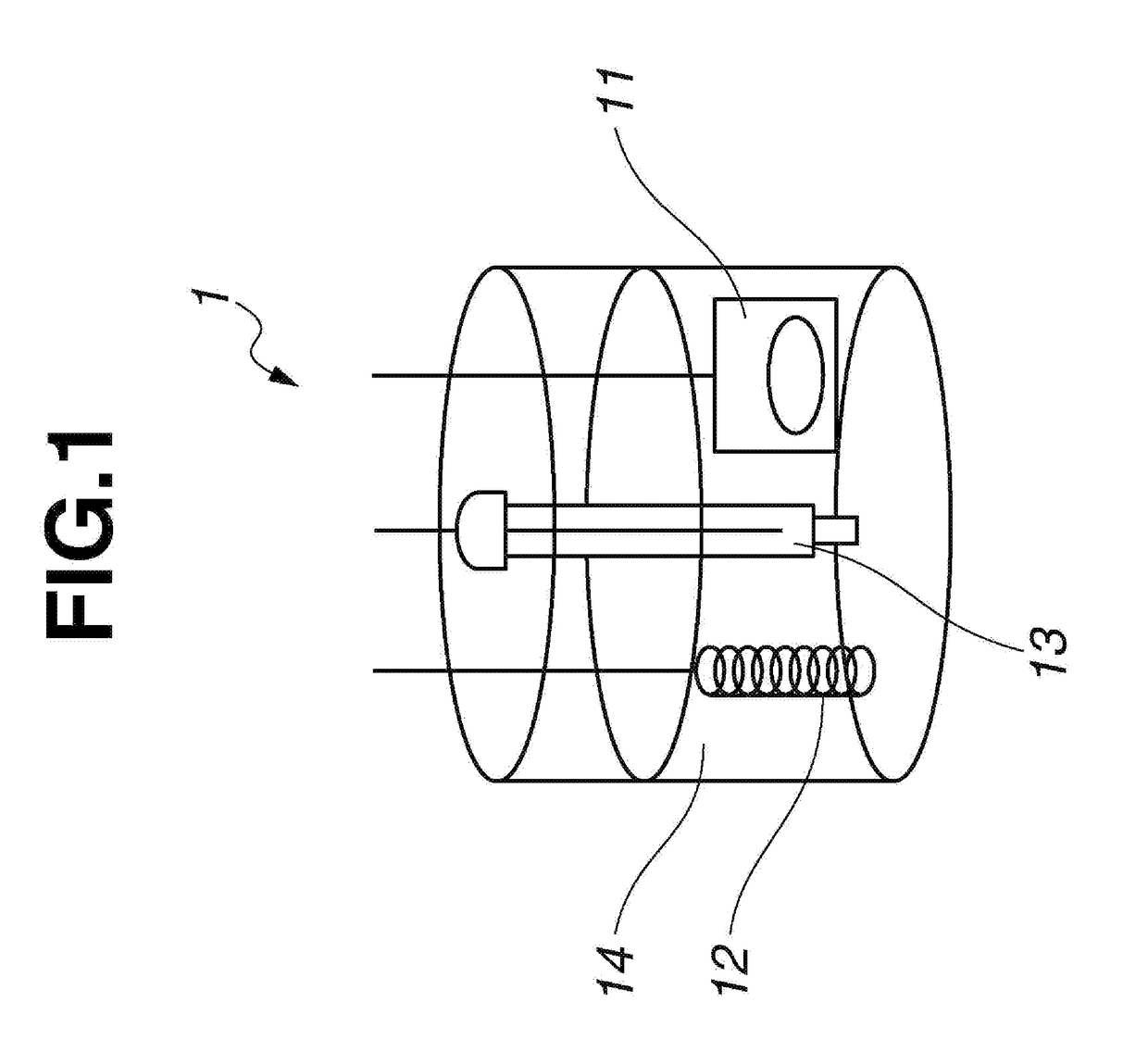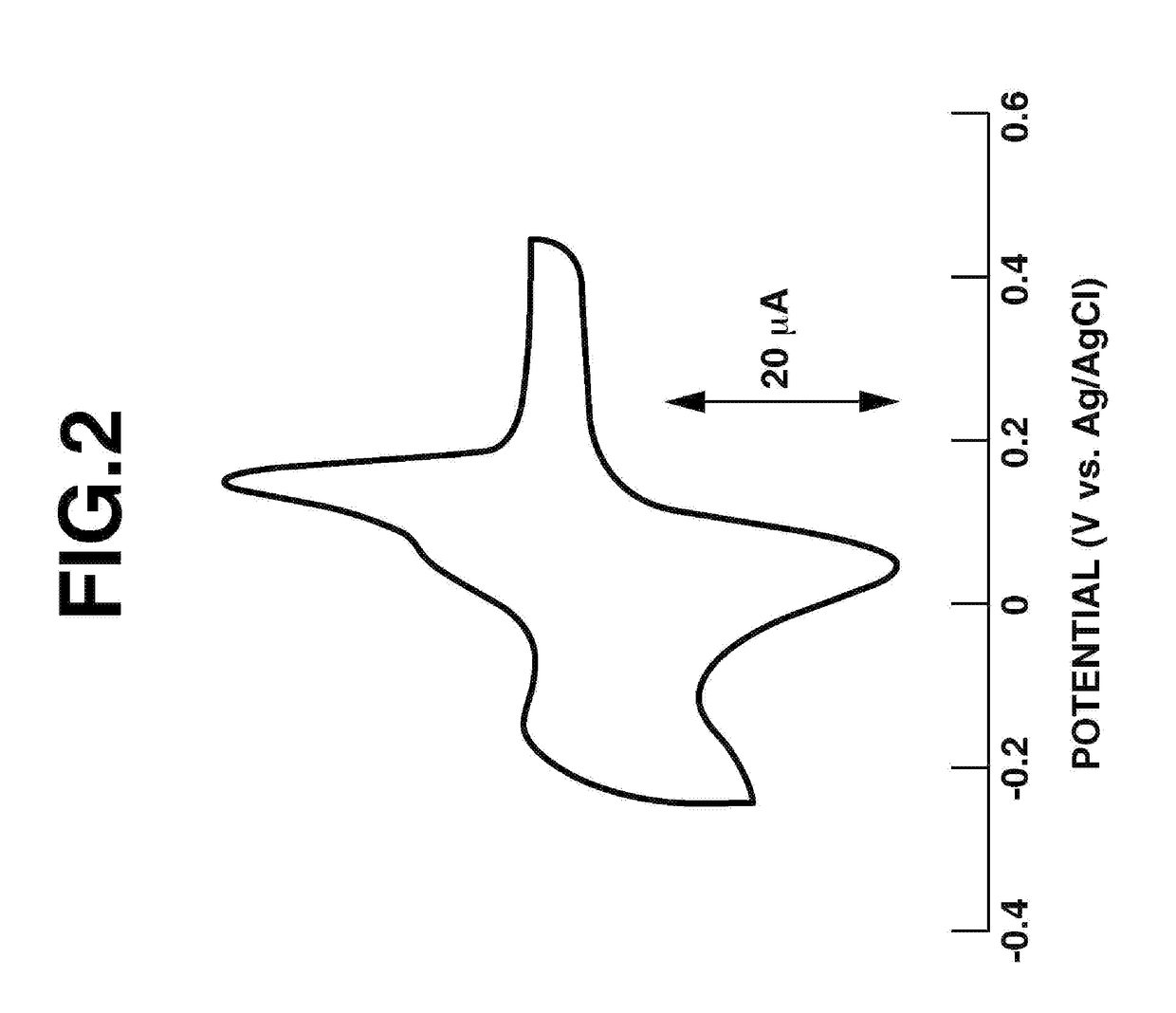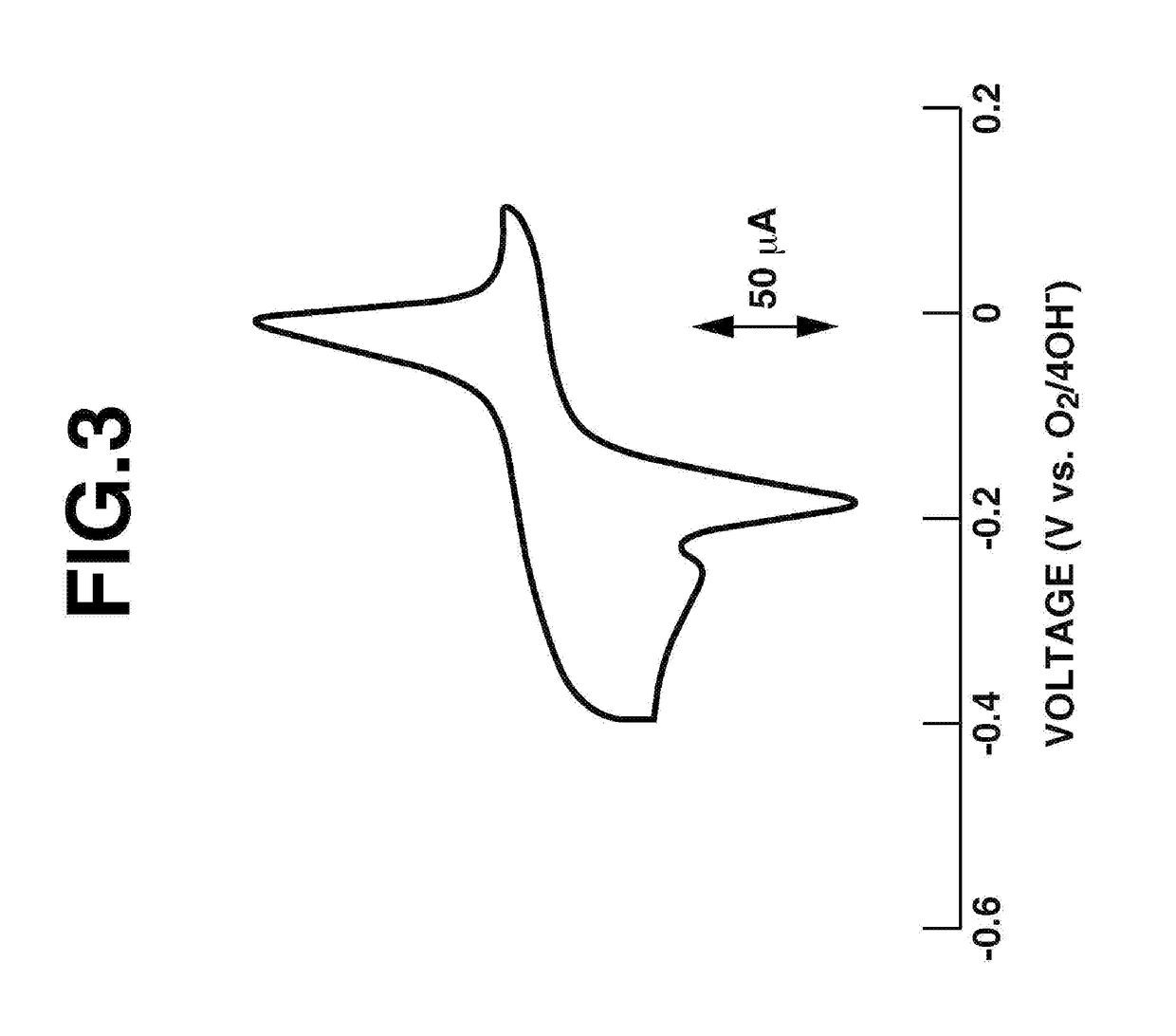Charge storage material, electrode active material and secondary battery
- Summary
- Abstract
- Description
- Claims
- Application Information
AI Technical Summary
Benefits of technology
Problems solved by technology
Method used
Image
Examples
example 1
Synthesis of Dipyridine-Fused Benzoquinone
[0186]Dipyridine-fused benzoquinone was synthesized by the following scheme.
[0187]Hexamethylphosphoric triamide (6 mL) and 70 mL of tetrahydrofuran (THF) were added to a 500 mL round-bottomed flask under an argon atmosphere, and the flask was tightly stoppered. This was cooled to −78° C. in a dry ice-methanol bath, following which 27 mL (54 mmol, 3.0 eq.) of lithium diisopropylamide (as a 2.0 mol / L solution in THF / heptane / ethyl benzene) was added and the flask contents were stirred at −78° C. for 30 minutes. Next, a THF (5 mL) solution of 3.2 mL (18 mmol, 1.0 eq.) of N,N-diethylnicotinamide prepared in an argon atmosphere was added one drop at a time with a syringe. The temperature was returned to room temperature and the reaction was carried out for 20 hours, following which 100 mL of pure water was added to stop the reaction. The THF was distilled off under reduced pressure in an evaporator, and the product was extracted with dichlorometha...
example 2
Synthesis of Dipyridine-Fused Benzoquinone Derivatives
[0197]Dipyridine-Fused Benzoquinone Derivatives A and B were synthesized by the following scheme.
[0198]Dipyridine-fused benzoquinone (200 mg, 0.95 mmol, 1.2 eq.) and 15 mL of acetonitrile were added to a 100 mL round-bottomed flask and dissolved under heating at 75° C. To this was added 49.4 μL (0.79 mmol, 1.0 eq.) of methyl iodide one drop at a time by syringe, and reaction was carried out for 2 hours. After reaction completion, the acetonitrile was distilled off under reduced pressure in an evaporator, following which the product was washed with dichloromethane and vacuum dried, giving 251 mg (0.71 mmol) of Dipyridine-Fused Benzoquinone Derivative A as a blackish-green solid (yield, 90%).
[0199]1H-NMR (CDCl3, 500 MHz, ppm):[0200]σ=9.81 (s, 1H), 9.55 (s, 1H),[0201]9.34 (brs, 1H), 9.20 (brs, 1H),[0202]8.79 (d, 1H), 8.26 (d, 1H), 4.63 (s, 3H)
[0203]Mass: m / z=225.1 (found), 225.1 (calculated)
[0204]Dipyridine-Fused Benzoquinone Deriva...
example 3
Synthesis of Dipyridine-Fused Benzoquinone Derivatives
[0206]Dipyridine-Fused Benzoquinone Derivatives C and D were synthesized by the following scheme.
[0207]Dipyridine-fused benzoquinone (300 mg, 1.43 mmol, 1.2 eq.) and 20 mL of nitromethane were added to a 50 mL round-bottomed flask and dissolved under heating at 40° C. While stirring this solution in a nitrogen atmosphere or in open air, a nitromethane solution (3 mL) of 176 mg (1.19 mmol, 1.0 eq.) of trimethyloxonium tetrafluoroborate was added one drop at a time, and the reaction was carried out at 40° C. for 30 minutes. After reaction completion, the product was concentrated under reduced pressure in an evaporator, purified by precipitation in diethyl ether, purified by recrystallization from 80° C. water and vacuum dried, giving 130 mg (0.41 mmol) of Dipyridine-Fused Benzoquinone Derivative C as a yellowish-green solid (yield, 29%).
[0208]1H-NMR (CD3CN, 500 MHz, ppm):[0209]σ=9.57 (s, 1H), 9.52 (s, 1H), 9.26 (d, 1H),[0210]9.08 (...
PUM
| Property | Measurement | Unit |
|---|---|---|
| Electric charge | aaaaa | aaaaa |
Abstract
Description
Claims
Application Information
 Login to View More
Login to View More - R&D
- Intellectual Property
- Life Sciences
- Materials
- Tech Scout
- Unparalleled Data Quality
- Higher Quality Content
- 60% Fewer Hallucinations
Browse by: Latest US Patents, China's latest patents, Technical Efficacy Thesaurus, Application Domain, Technology Topic, Popular Technical Reports.
© 2025 PatSnap. All rights reserved.Legal|Privacy policy|Modern Slavery Act Transparency Statement|Sitemap|About US| Contact US: help@patsnap.com



